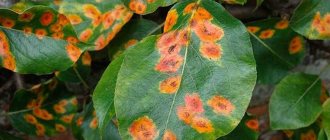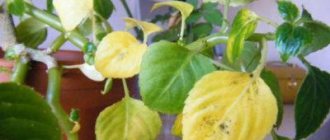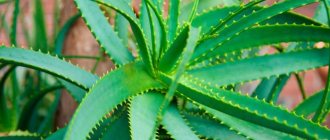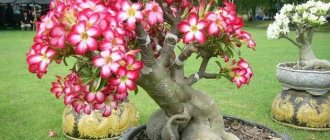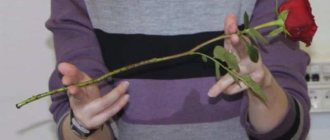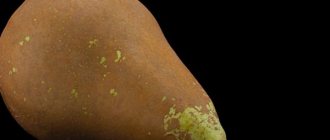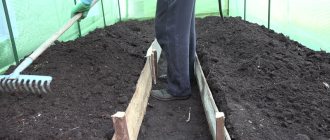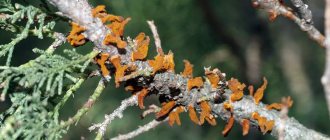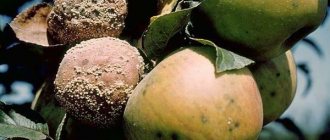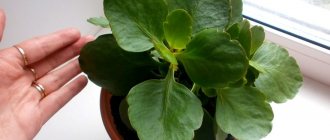Mistakes when caring for a beautiful indoor flower
Actions that lead to increased pest activity:
- the use of organic fertilizers, this contributes to the withering of flowers and leaves;
- too frequent watering: it is recommended to water balsam no more than 2 times a week in winter, and every other day in summer;
- infrequent watering is also harmful: when the soil dries out, the flower weakens;
- the temperature is low or, conversely, high, it is recommended to maintain this indicator at +18...+22°C;
- when the balsam develops, it needs to be fed once every 10 days; this should not be done too often, the flower may die as it cannot tolerate excess nutrients;
- dense installation of pots on the windowsill;
- Water is not removed from the pan, which contributes to waterlogging of the soil and root system;
- The leaves of the flower are not sprayed (this should be done daily).
Why does balsam wither and dry out?
Withering and drying of the plant is a common result of improper care. At the same time, both deficiency and excess moisture in the air and soil mixture can cause such a problem. To restore the appearance of a plant damaged by drought, it is enough to resume the previous watering regime. But the soil should not be allowed to become waterlogged, so as not to destroy the roots.
Another reason for balsam wilting is often a lack of nutrients. In this case, you can give strength to the plant by feeding it with humic fertilizers. Flower growers also claim that in some cases iodine will help eliminate the painful appearance of a flower. To do this, use a solution of 2 drops of iodine and 2 liters of water no more than once a month. This solution (about 50 ml per plant) is carefully poured onto the soil near the walls of the pot so as not to burn the root system.
Advantages and disadvantages
The advantages of this flower include:
- Easy to care for, just water moderately and regularly.
- Quick, easy rooting of cuttings in water.
- Early flowering, and up to 7-8 months in a row, the duration of abundant flowering without replanting is up to 3 years.
- Variety of colors.
- An abundance of bushes with proper care.
- Elegant appearance that can decorate the interior of any room.
- Decorative leaves with a variety of colors: purple, light green, black, bright light.
- Growing beautiful flowers in the form of roses.
- Planting plants not only in the apartment, but also in the garden, in flower beds, containers.
Among the disadvantages are:
- Plant instability to the onslaught of various types of pests, death from the invasion of mites, whiteflies.
- It is necessary to treat wet vanilla with pest repellents at least 2-3 times a year.
- Unadapted to proximity to other plants. They need to be placed far away, otherwise the wet Roly will begin to shed its leaves.
Pests that attack balsam and ways to combat them
Wet Roly often suffers from attacks by thrips, aphids, whiteflies, spider mites and other pests. In each case, their own methods of controlling insects are used, which allow saving the life of the plant.
Attack of thrips, aphids and mosaic disease
When balsam is affected by thrips, its young foliage at the tops of its shoots is deformed, and the appearance of the growing point changes. If the infection brought by thrips spreads quickly, the flower petals dry out and turn brown. Insects settle in the center of the corolla.
Thrips weaken the flower, disfigure it, prevent it from growing normally, and carry the mosaic virus, which is also dangerous for impatiens.
Most often, young shoots suffer from thrips. At the first symptoms of a pest attack, it is necessary to treat the flower with special preparations. The affected parts of the plant are completely removed, and healthy parts are sprayed with insecticides every five days.
Biological effects
For every predator there is a worse predator. Thus, the enemy of the spider mite is the phytoseiulus bug. The artificial colonization of plants by these insects makes it possible to destroy the parasite with someone else's teeth, so to speak. Disadvantage: this method can only be used in closed ground conditions.
To combat ticks, biological products have been created: “Akarin”, “Bitoxibacillin”, “Fitoverm”. How to use them correctly?
- "Akarin" is diluted in a proportion of 2 ml of the drug per liter of water.
- “Bitoxibacillin” - 80-100 g per 10 liters of water. The disadvantage of this drug is that it can cause allergies upon contact with treated plants.
Both solutions are used throughout the growing season every 15-17 days.
“Fitoverm” is diluted in an amount of 10 ml per 10 liters of water. Processing is carried out every 7-10 or 14-20 days. The treatment period depends on the age and size of the plant.
The pesticides clofentesine and flufenzine belong to the hormonal group. They do not destroy all individuals at once, but sterilize the uterus. The effect of their use is long-term, but becomes noticeable after a few days. Some individuals die out, while others do not appear. If you need to destroy a tick urgently, you can mix this drug with any of the biological products.
Reproduction
Reproduction of wet roly-poly is possible at any time of the year. Cuttings are made below the nodes, removing the lower leaves and the weak top.
Vanya propagates by cuttings. For planting young seedlings, the substrate must be light enough. In order for the plant to take root faster, the bowls are placed in a dark place for a couple of weeks.
Planting is carried out when their length is 5-6 cm in soil fertilized with peat and sand. It is possible to place several roots in one pot at once, so the flowering of the bush will be more luxuriant.
Vanka can be propagated by seeds in the spring by planting 2-3 seeds in a pot, pre-treated with a weak solution of potassium permanganate (1%).
Impatiens pests
Spider mite
Signs of spider mites are yellow specks on the surface of the leaves. If left untreated, these specks will later develop into large spots that will be discolored and dry.
Spider mites are small insects that live on the inner surface of leaves.
Typically, the appearance of spider mites is caused by dry air and elevated indoor temperatures. Therefore, for prevention, constantly spray the plant with water.
To avoid the spread of the pest, the affected parts of the flower must be removed. If the lesions are still mild, you can wash the leaves with soapy water or mineral oil.
If the disease is already quite severe, the leaves must be treated with “Fitoverm”, “Akarin”, “Vertimek”, “zipper” or other drugs.
Whitefly
A whitefly is a small insect, two to three millimeters in size with white wings; the insect larvae are also white and they cause the most harm.
The disease can be noticed by the yellowing of the leaves and the presence of specific sticky secretions on them; insects can also be seen on the inside and outside of the leaves.
To resist whitefly, the leaves are treated with special means, based on potassium soap or other preparations: “Aktellik”, “spark”, “biotlin”, “tanrek”, “bison”, “karbofos”, “inta-vir” and others.
Multi-clawed mites
Multi-clawed mites are small transparent white insects, about a third of a millimeter in size.
Symptoms of multi-clawed mites include hardening and distortion of leaves. They practically do not grow and begin to curl at the edges.
The cause of multi-clawed mites is increased temperature and humidity in the room.
To prevent mites, you need to check the plant regularly.
If the balsam is already infected, use such drugs to treat it as: “Fitoverm”, “Molniya”, “Vertimek”, “Akarin”.
Trips
Signs of this disease are deformation of young leaves, since their growing point is bent under the influence of thrips. Also signs of their appearance are the appearance of spots on flowers and browning of the petals along the edges.
Thrips actively appear in the area of flower stamens and are carriers of bronze leaves.
In order to combat thrips, it is necessary to immediately remove infected leaves and flowers. You should especially carefully monitor young plants, since even short-term contact with pests can cause them to be permanently damaged.
It is necessary to treat the flower against thrips with such preparations as “actara”, “fufanon”, “actellik”, “spark”, “tanarek” and others.
It is necessary to use special preparations in a course of several procedures with a difference of 4-5 days, since insecticides may not act during all periods of insect development.
Flower diseases
The plant is a perennial . In common people he is also called Vanka wet, Touchy and Diligent Lizzie. Its stems are quite fragile, the leaves are oval in shape with jagged edges. Their color varies from green to brownish-purple. The flowering period is from May to December.
The main pests on Balsam are insects such as whitefly, spider mites, thrips and mites.
As for diseases, this is gray rot or other fungal diseases caused by excess moisture.
Why do balsam leaves fall off - what to do?
Like many representatives of this species, the leaves fall off due to hypothermia and lack of light. If the plant is on a windowsill, then it must be moved to a warmer place, but with sufficient lighting.
The problem may also arise due to irregular watering. If the soil in the pot is dry, then it is worth increasing the frequency of watering.
Why do balsam leaves curl - what to do?
Curling of leaves is a symptom of mites or spider mites. Infected parts must be removed, and the flower itself must be treated with a special solution.
Why do balsam leaves turn yellow?
Yellowing of the leaves can be caused by a lack of moisture or the appearance of spider mites.
It is necessary to adjust the frequency of watering and treat the leaves against this pest, after first making sure of its appearance.
Why do Balsam's buds fall off?
Impatiens sheds buds when the soil becomes too dry or waterlogged.
Buds may fall off during the adaptation period, when it was recently purchased and is trying to adapt to new conditions.
Balsam leaves are drying up - what to do?
This means the plant feels a lack of moisture. It is necessary to increase the frequency of watering.
Stems stretch out
The stems are stretched due to lack of light and excessively high air temperature in the room.
To avoid problems, move the flower to a brighter and cooler place.
Weak flowering
If the plant blooms poorly, it means it may not have enough light or nutrients. The problem may also be hypothermia and premature transplantation.
Place the flower in a sunny place where it is warm enough and fertilize with any suitable fertilizer.
Viruses that infect plants
A flower can usually be affected by only one virus - gray mold. This happens due to excessive watering and high humidity in the room.
Signs of gray rot are wilting and falling leaves.
To avoid root rot, adjust the watering process and replant the plant in a pot with new soil, after rinsing the roots to get rid of the virus in the soil. Water only after the soil is completely dry.
Brief information about the plant
Impatiens are perennial crops with erect stems and fleshy, toothed foliage. The maximum height of the bush is 50 cm, leaf length is 8-12 cm. The inflorescences are located in the axils of the plant, their shade is varied (from delicate pink to rich red).
Balsam hybrids have double flowers. After the flowering period is completed, a fruit is formed - an elongated box, which consists of 5 twisted leaves.
On a note! At the slightest touch to the box, it opens and seeds shoot out with force. For this property the plant is called Touch-me-not.
Long flowering explains another name for balsam - Ogonyok. In different countries, this species also has different designations: Zealous Lisa in Germany, Vanka-wet in Russia.
Features of indoor balsam foliage
Balsam leaves are soft green, lance-shaped, with jagged edges. With good care, they reach a length of up to 12 centimeters. The leaves contain a large supply of nutrients, which is why they are so fleshy. They also have very high sensitivity. It is by them that almost all plant diseases can be identified.
Vanka wet has a peculiarity - before the rain, drops of juice form on its leaves and branches, and as they evaporate, they crystallize. Because of this, it is called a home rain predictor.
Interesting! Balsam leaves contain trace elements and are added to salads and used in homeopathy.
Common balsam diseases and their treatment
One of the main signs indicating that “Vanka wet” requires the help of a grower is a change in the appearance of the plant. Strange spots, leaf drop, discoloration, or wilting are the most common signs of a problem. In most cases, the cause of the development of diseases or damage to balsam by pests is incorrect care.
If the conditions of maintenance are violated, the immunity of plants, which ensures their resistance to parasites and pathogens, begins to rapidly decline. Some diseases are destructive to balsams
Given this fact, it is important to take all necessary measures in time, as soon as you notice that the flower has acquired a sickly appearance.
Bacteriosis
The fact that the plant has become a victim of a dangerous disease - bacteriosis, is indicated by the formation of gray-brown spots on its leaves. As the disease progresses, the lesions become black-brown in color. Among the main causes of bacteriosis, flower growers cite excess moisture in the soil. In addition, balsam can be infected with bacteriosis pathogens through infected (poor-quality) soil or untreated tools. This disease is very dangerous, since most often the plant affected by it dies quite quickly.
In most cases, diseased flowers must be destroyed. However, you can try to compete for your green pet in the following way:
- remove all affected parts of the plant;
- thoroughly spray the bush and soil in the pot with a solution of copper oxychloride (4 grams of substance per 10 liters of water);
- repeat treatment after 2 weeks.
Important! During treatment, the plant must be isolated from healthy flowers. Considering that this disease is extremely contagious, the risk of its spread throughout the entire green collection is very high
Powdery mildew
The fact that the plant has suffered from powdery mildew is indicated by specific whitish spots that form on the leaves. If you do not start treating the disease in a timely manner, very soon the affected leaves will wither and fall off. The main causes of this disease are disturbances in temperature and humidity conditions, incorrect watering and lack of lighting. The complex for treating powdery mildew includes the following measures:
- removal of affected parts;
- treating the bush with a soap-soda solution (1 tablespoon of soda ash, 2 tablespoons of soap, 5 liters of warm water); the plant is treated using a sprayer for indoor flowers;
- after 1.5–2 weeks the procedure is repeated.
Mosaic
One of the most dangerous diseases that leads to the death of balsams is mosaic. Specific symptoms of this disease are the formation of yellowish spots and deformation of the foliage. As the disease progresses, the tissue of the affected leaf blades undergoes necrosis, as a result of which the plant gradually turns yellow and eventually dries out completely. The main carriers of the causative agents of this disease are thrips - tiny parasites that live in the soil.
Since there are currently no effective treatments for this disease, diseased plants are usually destroyed.
Rot
Failure to follow plant care recommendations often causes the development of an insidious fungal disease - gray rot. With this problem, dirty brown spots begin to form on the foliage of affected balsams. Beginning flower growers often encounter the development of rot on balsams as a result of watering with cold water, as well as due to too low air temperature in the room. To save the plant, you must adhere to the following steps:
- remove all infected parts of it - leaves and stems covered with spots, in this case they are cut off with a sharp disinfected blade, after which they are destroyed;
- after the procedure, the diseased bush is carefully treated with fungicidal preparations (“Fundazol”);
- To make the treatment more effective, you can spray the plants with products prepared according to folk recipes, for example, an infusion of dry garlic or onion peels.
Diseases and pests of balsam flower
Fast growing, almost continuously blooming and always elegant, balsams are considered one of the best indoor plants for beginning gardeners.
Bright impatiens-lights, which delighted our grandmothers, are still desirable residents of window sills, loggias and garden plots. They respond to simple care with the formation of new buds and shiny foliage. But this unpretentious plant sometimes becomes a victim of insect pests and pathogens of various diseases. What dangers threaten the balsam flower? How to identify them and, if necessary, provide treatment for ornamental plants?
Most often, the reasons for the weakening of a green pet, its withering or cessation of growth are failure to comply with the required conditions of maintenance or lack of attention. In nature, balsams live in regions with a warm, fairly humid climate, where there are no sudden changes in temperature and, especially, frost.
The minimum permissible temperature for a balsam flower is 13 °C, but if indoor or garden balsam is decorated with variegated foliage, then the air should not be cooled below 15 °C. The optimal temperature for flowering is 18–20 °C. In a hotter room, flowers fall off faster and the formation of new buds slows down. In addition, other serious problems are inevitable.
It’s not for nothing that balsam has been called Vanka the Wet since ancient times. Plants are not only extremely critical of soil drying out, but also love moist air.
Balsam diseases and their treatment
At low temperatures, the need for moisture decreases, so watering must be reduced. If this is not done, the appearance of rot and other diseases and pests of balsam, as in the photo, cannot be avoided.
Among balsam diseases, downy mildew causes the greatest harm to plants located outdoors.
Several years ago, a real epidemic of this disease struck balsams in the United States. The development of infection was facilitated by:
cool wet weather; crowded plantings, in which moisture does not have time to evaporate from the soil surface; insufficient attention to plant care.
The first signs of a disease caused by harmful fungi appear at temperatures below 16–18 °C with 100% humidity. The pathogens penetrate the leaf tissue with moisture, and after a couple of days the healthy balsam flower is transformed. First, a whitish coating appears on the back of the leaves, then they turn black and fall off.
New foliage becomes smaller or growth stops altogether. As a result, only non-viable shoot remnants remain from the flowering balsam. To prevent plant death during cold weather:
- reduce the frequency of watering;
- protect balsams from cold dew;
- take measures to ventilate the room.
At the first signs of the disease, all balsams affected by the disease are removed, and plants are treated with systemic fungicides without visible damage.
Impatiens that are forced to grow in excessively wet soil often become victims of putrefactive bacteria.
An additional factor contributing to the spread of dangerous fungi and microorganisms is low air temperature. In such conditions, plants need less moisture, their metabolic processes and growth slow down.
Rot affects stems in contact with the ground, as well as leaves and other parts of the plant. An infected shoot or leaf stalk turns brown, thins and dies
The greatest attention should be paid to balsam disease and its treatment if traces of gili are found on young specimens and seedlings that have just taken root
As a preventive measure, cuttings prepared for rooting must be treated with a systemic fungicide, then repeated treatment is carried out at planting, not forgetting to irrigate the soil at the base of the stem well with the product.
Disease susceptibility
Why does balsam develop various diseases? The main reason is the plant’s moisture-loving nature. Its stems and foliage are 50% water. The bush loves well-moistened soil and air. And the abundance of moisture creates optimal conditions for the proliferation of pathogens and pests.
Indoor balsam is especially susceptible to diseases such as downy mildew. Among the reasons for its development are poor quality of care, low temperature, too much watering (moisture from the soil does not have time to evaporate).
The disease is caused by harmful fungi. The pathogen penetrates the plant tissue with moisture, after 2-3 days the healthy bush begins to wither (the leaves become covered with a white coating, then they turn black and fall off). The control method is treatment with fungicides. You can use Baktofit, Bordeaux mixture, Vitaros.
Impatiens are also susceptible to the following diseases.
- Gray rot. Symptoms are brown spots, gray coating on the foliage and stem.
The disease is caused by bacteria from contaminated soil or water. An additional risk factor is freezing of the bush, cold water for irrigation, drafts. You can get rid of it by promptly cutting off the affected leaves and replanting the plant in a new pot. Garlic solution or Fundazol is suitable for spraying. - Bacteriosis. The sign is watery spots on the foliage, which later spread throughout the bush. The method of control is to remove the affected leaves and then treat the bush with Bordeaux mixture.
We recommend that you read our other articles about what to do if you have balsam:
- leaves fall;
- there are no flowers, but only leaves grow;
- leaves turn yellow;
- buds and flowers fall.
Characteristic properties of a houseplant
Impatiens is a very interesting plant that has its own characteristics.
They are as follows:
- A flower native to Africa loves abundant light, but in hot weather it does not tolerate direct sunlight. Impatiens also take root in partial shade, while the flower bushes lose their splendor and do not form a profusely flowering crown.
- Tropical Impatiens are thermophilic. The acceptable temperature regime for its favorable development and growth is +22° in summer, +15°C in winter. Impatiens does not tolerate too dry air in the room where it grows.
- “Vanka wet” is moisture-loving. Requires abundant watering in summer and moderate humidity in winter.
- During the active growth phase (from spring to autumn), the flower needs feeding with mineral and organic fertilizers.
- Under growing conditions in Russia, balsam tends to bloom for more than six months. If the lighting process and temperature conditions in winter are properly organized, then the plant can delight with flowers all year round.
- A potting soil mixture in which balsam can comfortably take root consists of sand, turf, humus, peat and leaf soil in a ratio of 2/2/2/1/2.
Prevention and proper care
In order for balsams to delight their owner with lush green foliage and regular flowering, they need to be provided with comfortable living conditions. Thus, caring for balsam at home involves fulfilling such important conditions as:
- sufficient diffused lighting throughout the day;
- regular abundant watering (in summer), eliminating waterlogging of the soil;
- high-quality soil mixture and the presence of a drainage layer in the pot;
- moderate watering in winter (about 1 time every 2 weeks);
- maintaining the air temperature at a level of at least +15°C.
In order for the plant to feel normal and be able to fully develop and bloom, it should be provided with regular feeding . The recommended frequency of fertilizing is about 1 time per month (from spring to autumn). With the onset of winter, they stop feeding the plants. Impatiens do not have any special requirements for air humidity if the room temperature does not exceed +22°C.
However, as temperatures rise, plants begin to need moist air . In this case, flower growers recommend using household humidifiers and regularly spraying the plant.
It is very important to protect balsams from drafts and cold weather. During the flowering period, when plants become most vulnerable, drafts and low temperatures can cause flowers and buds to fall off. For all their relative unpretentiousness, balsams do not like changing places. For this reason, they try to grow them without resorting to frequent movements from one place to another.
These plants feel very comfortable on window sills in the western and eastern parts of the house.
For tips on caring for balsam at home, watch the video below.
Treatment
At low temperatures, the need for moisture decreases, so watering must be reduced. If this is not done, the appearance of rot and other diseases and pests of balsam, as in the photo, cannot be avoided.
Among balsam diseases, downy mildew causes the greatest harm to plants located outdoors.
Several years ago, a real epidemic of this disease struck balsams in the United States. The development of infection was facilitated by:
cool wet weather; crowded plantings, in which moisture does not have time to evaporate from the soil surface; insufficient attention to plant care. New foliage becomes smaller or growth stops altogether
As a result, only non-viable shoot remnants remain from the flowering balsam. To prevent plant death during cold weather:
New foliage becomes smaller or growth stops altogether. As a result, only non-viable shoot remnants remain from the flowering balsam. To prevent plant death during cold weather:
- reduce the frequency of watering;
- protect balsams from cold dew;
- take measures to ventilate the room.
At the first signs of the disease, all balsams affected by the disease are removed, and plants are treated with systemic fungicides without visible damage.
Impatiens that are forced to grow in excessively wet soil often become victims of putrefactive bacteria.
Rot affects stems in contact with the ground, as well as leaves and other parts of the plant. An infected shoot or leaf stalk turns brown, thins and dies
The greatest attention should be paid to balsam disease and its treatment if traces of gili are found on young specimens and seedlings that have just taken root
How to cure flowers from spider mites? If a mite is detected, the plant must first be thoroughly washed with laundry or tar soap. Lather each leaf and each axil, whipping the foam with your hands and carefully working all parts of the plant. Leave the flower for several hours (or for a day), covering it with a plastic bag. Then rinse off the soap thoroughly under a warm shower.
If the lesion was minor, then such a procedure will be sufficient, although it must be repeated two or three times within a week. The plant should be sprayed with warm water twice a day and inspected regularly.
Wash the frames and window sill with hot water and any detergent. The remaining plants on the windowsill also need to be treated for preventive purposes. Spider mites do not tolerate fresh air and ventilation.
What to do if the defeat has gone far enough? You must first treat with soap, then spray with Intavir, Fitoverma, Karbofos. When treating a window, it is also worth adding Karbofos to the water.
Sometimes a fairly simple method helps: place an open container with finely chopped garlic or turpentine near the plant, tightly close the plant along with the container for 2-3 days. The edges of the pot should be lubricated with tar.
How to save a frozen plant?
Drafts and low temperatures are detrimental to delicate balsams. If they caused the plant to die, you can try to correct the situation. To do this, all frostbitten parts of the flower are removed and trimmed down to living and healthy tissue, after which watering is temporarily reduced. While the affected balsam is sick, it is provided with extremely gentle conditions. In some cases, gardeners save the plant in a radical way, dividing it into cuttings.
Frostbitten leaves on cuttings, as in the previous case, are removed and trimmed to undamaged tissue.
Fighting spider mites with folk remedies
For an indoor green corner, a tick is no less dangerous an enemy than for a vegetable garden. Just as in garden beds, in flowerpots the parasite affects almost all species. The “almost” category includes Saintpaulia, Streptocarpus, Gersenia, and Uzumbara violets. In contrast, dracaenas, dieffenbachias, indoor roses, arrowroot, citrus fruits, and balsam are a favorite delicacy of the tick.
If this scourge has started in your apartment, disinfect the entire window sill and preventively treat healthy plants. In some cases, you may have to sacrifice one of the sickest flowers to save the rest. Ticks spread very quickly and hide well when unfavorable conditions occur.
Methods proven by folk experience have an effect no worse than industrial drugs. In any case, they will not cause harm to either humans or animals. The ingredients for the solutions are the simplest and most affordable. Not only indoor plants, but also those living in garden beds, especially cucumbers, can be treated with folk remedies.
At the first sign of disease, give the plant a cold shower every day. This is suitable for those species that do not mind such a procedure. You can use laundry soap or dishwashing detergent - wash the leaves, stems, pot, and window sill well. Chop approximately 150 g of peeled garlic in any way, add 1 liter of water and leave for 5-7 hours. Dilute the resulting concentrate in a ratio of 5 ml/1 l of water and use it to treat plants. Similar to garlic infusion, onion infusion is prepared, only it is used without dilution. Garlic cloves and onion pieces can be placed in a pot if the indoor plant does not like spraying. Cover the pot with a plastic bag. An infusion is prepared from the roots of dandelion: 20 g of roots per 1 liter of water. Take warm water. Can be used after a couple of hours. You can treat infected areas of hard-leaved plants with a swab dipped in medical alcohol.
This must be done carefully and quickly so as not to burn the leaves.
- Cyclamen. Boil several tubers of this plant for 40 minutes. After a day, the decoction is ready for use.
- Yarrow. Pour a bucket of boiling water over a kilogram of dried grass. After 3-4 days, add 3 tbsp to the strained infusion. spoons of grated laundry soap.
- Tar soap. Proportion: 10 g per liter of water.
- Turpentine. A jar of turpentine is placed near the affected houseplant and covered with a plastic bag for several hours.
Balsam propagation
The Vanka wet flower propagates in spring and summer. Two methods are suitable for its propagation: seeds and cuttings. You can purchase ready-made seeds or get them yourself from your home plant, but to do this you need to take care of its pollination. The seeds germinate within two weeks.
Rooting of cuttings requires approximately the same time. As you can see in the photo, a wet vanka indoor flower can easily take root in water. 3-4 pieces of charcoal should be placed in the water for rooting cuttings. Side shoots of a plant about 8 cm long are suitable as cuttings.
After the cuttings take root, they should be transplanted into small pots. At first, the transplanted cuttings should be covered with plastic wrap to ensure a high level of humidity.
This plant does not like sudden temperature changes. However, in winter, it is advisable to reduce the temperature for balsam to 14-16 degrees, providing the plant with a period of rest.
Briefly about the plant
Annual and perennial flowering plants from the Asteraceae family are called “marigolds” in Russia. The scientific name is Tagetes. Flowers appeared in Europe in the 16th century, arriving in the Old World from America on the ships of the conquistadors. Over centuries of work, breeders have developed about 60 varieties and hybrids of marigolds. The long flowering and unpretentiousness of the plant made it popular among gardeners. You can learn more about marigold varieties, as well as see descriptions and photos of flowers here, and read about the features of caring for the low-growing species here.
Marigolds are bushes with an erect stem, pinnately dissected leaves of various shades of green and bright inflorescences. The height of the crop is from 20 to 100 cm. In decorative floriculture, 3 main types of tagetes are grown:
- rejected;
- erect;
- thin-leaved.
You can learn about how to properly grow upright, thin-leaved, and rejected types of marigolds in open ground, as well as see photos of flowers here.
Varieties of marigolds with chrysanthemum-shaped, double and semi-double flowers have been developed. The color of hybrids can be white, yellow, orange, red or two-color.
Information. Some varieties of marigolds are used in cooking and medicine.
Flower Wet Vanka: growing features
In total, botanists identify more than 600 species, including indoor balsam.
There are two large types of this plant: annual and perennial.
But, regardless of the type, there are several general rules for caring for Vanka:
- Vanka - wet flower - a name that did not arise by chance, but due to its moisture-loving nature. The flower needs regular watering, otherwise it stops blooming, and the leaves lose their freshness, brightness and healthy appearance. The lack of moisture is expressed in the fact that at first the bush becomes drooping, you can see how the stems literally lie down. You can also see how, after abundant watering, the plant comes to life right before your eyes, the leaves fill with juice, the ovaries of inflorescences form, and the stems acquire their former durability.
- Watering in winter can be reduced somewhat, but in the summer and spring months, especially during hot periods, it is better to overwater the bush rather than underwater it. It begins to wither quickly. In rooms where it is too hot, watering should be done every other day.
- Abundant flowering is ensured not only by fertilizing, but also by the small size of the pot. Experienced gardeners often plant indoor balsam in small plastic pots and seedlings, and then several of these pots are placed in a rectangular flower tray. To make such a composition decorative, tow or a stone-sand mixture is used. The latter provides drainage, moisture retention and aeration. For decorative purposes, the composition is formed from balsam with inflorescences of different colors.
- Flowering is also directly dependent on the quality of pruning and lighting.
- Impatiens are light-loving; in the shade the plant continues to grow, but with less intensity, and flowering is significantly reduced and is short-lived.
The general principle of caring for plants is their regular feeding. Vanka is not particularly picky about it, but the use of mixtures for indoor flowers, such as “Ideal,” improves the appearance of the color and also improves flowering. Let's take a closer look at the intricacies of caring for balsam.
Parasites: diagnosis, causes and actions
Impatiens are most often affected by mites - these are annoying small parasites that suck all the juice from the stem. Also dangerous to the plant are aphids, thrips and whiteflies.
Tick infestation
Characteristic signs can be noticed when examining the back of the leaf or internodes. Symptoms of spider mite infestation are a thin white film and small dots on the foliage, loss of shine, and a decrease in the intensity of flowering. The reasons for the appearance are high room temperature and low humidity levels. How to deal with spider mites on balsam?
- Trimming affected parts.
- Treating the bush with a soap solution (it is preferable to dilute tar soap in water). Apply foam to the plant, rinse after 5-10 minutes. Repeat the procedure after 7 days.
- With a high degree of infection, treatment with chemicals is required. Their list includes Fitoverm, Vertimek. Select the dosage according to the instructions.
Impatiens can also be parasitized by cyclamen mites. It deforms young leaves, lateral buds and shoots. The plant loses its growth points and quickly dies. You can get rid of the pest only by treating it with acaricides.
Aphid
The insect sucks the juice from the leaves, then they become deformed and growth stops. With a high degree of damage, the process of photosynthesis is impossible, as a result, balsam stops developing normally and dies.
It is quite difficult to notice an infestation on a bush, but aphid nests made of whitish plaque are clearly visible on the walls of the pot.
Important! The reason for the development is improper care and irregular watering (the pest multiplies in dry soil).
Aphids can be identified during transplantation or inspection of the root system. Folk methods of struggle are tinctures of tobacco leaves, onion peels and wormwood. Also, the infected bush can be treated with ash, tobacco dust or a mixture of ash and soap.
How to fight aphids? Chemicals for saving balsam - Fas, Decis, Actellik. Dosage and application characteristics depend on the size of the plant (use according to instructions). When treating with chemicals, be sure to cover the soil in the pot with film.
Detailed algorithm of actions:
- Removing damaged and shrunken fragments.
- Treatment of cut parts with insecticides. Spraying the bush with a solution of dried tobacco and tansy grass.
- Completely change the soil in the pot and disinfect the pot itself.
Whitefly
In appearance, the insect resembles a small white moth. The breeding period (from laying eggs to hatching of the individual) is 35-40 days.
The whitefly lays eggs on the back of the leaf; later these eggs hatch into larvae that eat the entire balsam bush.
Over time, the skin of the larvae hardens, and individuals become invulnerable to certain chemicals. Therefore, it is necessary to process the plant several times, observing a break of 4-6 days.
Symptoms of infection - the foliage loses its green color, yellow spots appear on it, and later it dries out and falls off. A dangerous consequence is the complete death of the plant.
Reference. The whitefly also secretes a liquid with a sugary consistency, which contains sooty fungus pathogens.
How to kill whiteflies?
Regular shower. Eggs and larvae can be washed off with water pressure
It is important to process both sides of the sheet. Removing the affected parts of the bush.
Destruction of individuals using insecticides. Flower growers recommend using Karbofos, Tanrek, Actellik
These are poisonous drugs that are prohibited from being sprayed in an apartment. The procedure must be carried out on the balcony or on the street.
An alternative to chemicals is home remedies. You can treat balsam with tincture of grated garlic. To prepare, you need to chop 1-2 cloves and turn them into a paste. Pour boiling water and leave for up to 3 hours. Use for spraying 2 times a day.
Thrips
Insects pose a double threat: they weaken the bush, being a pest, and are also carriers of the mosaic virus, a dangerous disease of indoor balsam. The problem can be diagnosed by the deformation of young leaves at the top and a change in the growing point.
The greater the impact of pests, the worse the appearance of the flowers. The edges begin to dry, and living insects can be seen in the center of the corolla.
The main method of combating them is to remove infected fragments and subsequent treatment with insecticides
It is important to isolate the affected bush from the rest. You need to spray the plant with Tanrek or Actellik
Tanrek should be diluted in a proportion of 1 ml per 5 l or 2 ml per 10 l (the drug must be measured with a syringe). Actellik dosage for severe infection: 1 ampoule per 1 liter of water. The spraying procedure should be repeated after 5-7 days.
Pests
Impatiens are quite resistant to pest attacks, but flower growers often have to face this problem. Some parasites can be detected with the naked eye, others with a magnifying glass. The activity of others can be indicated by corresponding traces of vital activity - fragments of cobwebs, spots and dots on leaves, buds and shoots.
Spider mites
Very often, weak balsams become victims of spider mites. The fact that the plant has suffered as a result of the activity of these pests is indicated by the formation of a whitish coating on the leaves that has a fibrous structure. This plaque is a waste product of mites that feed on the juices of the flower. In most cases, these parasites enter pots with indoor plants from the external environment.
They can be brought into the house on clothes and shoes. And also the source of the spread of pests can be contaminated soil, purchased from a dubious store or prepared with your own hands from untreated ingredients. To destroy ticks, chemical agents are used - “Aktellik”, “Fitoverm”.
The process of treating plants will go much faster if the affected bushes are additionally sprayed with soapy water.
These tiny pests often plague indoor flower lovers. The fact that the green pet has suffered from the activity of aphids is indicated by yellowing and deformation of its leaves, buds and shoots.
If the plant dries out
First of all, you should inspect it for the presence of spider mites. If the parasite is present, then this is the cause.
What should be done:
- Trim flowers to reduce strain.
- Lather the sponge with laundry soap and wipe the plant. You should also wipe the pot and tray.
- Rinse the soap thoroughly with running water from the shower.
- After drying, spray the plant with Fitoverim (an insectoacaricide with enteric contact action). To prepare the solution, you need to dissolve 5 g of the drug in 1 liter of water. Spray the flower with a spray bottle. Repeat the procedure after 10 days.
Spider mites are parasites that feed on plant cell sap. As a result, they become weak and susceptible to infections.
If there are no spider mites, then the reasons may be the following:
- Dry air. In order to solve the problem, you need to spray the flower twice a day.
- Air temperature. It should not fall below 15 degrees.
- Direct sunlight. First, burns appear, and then the flower dries up.
- Soil quality. If the soil has not been changed for more than a year, it becomes depleted. The flower lacks nutrients.
- Root rotting. Reasons: excessive watering, soil contamination with fungal infections.
- Insufficient watering. The plant suffers from lack of moisture.
Causes of flower death:
- Diseases of fungal, viral and bacterial nature.
- Pests. Thrips, whitefly, spider mites, aphids.
- Improper care: excessive watering (causes root rot), insufficient watering, low temperature combined with high humidity.
How to reanimate a plant to save it?
What to do if the flower has withered, drooped and darkened at the base and is slowly dying? If the flower dies, urgently do the following:
- Find out the reason.
- Adjust air and soil humidity.
- Trim the affected areas back to healthy tissue.
- Eliminate drafts.
- Avoid exposure to sunlight.
- Spray the flower with fungicide. It is best to use the broad-spectrum drug Discor. To do this, dissolve 1 ml of the drug in 2 liters of water. Spray the plant with the resulting solution from a spray bottle. Repeat procedures after 10–12 days.
Discor is a highly effective chemical fungicide of contact and systemic action. Covers a wide range of diseases. Often used in cases where the plant disease is uncertain.
If the roots are damaged:
- Remove the flower from the pot and carefully free the root from any lumps of soil.
- Rinse the root under running water.
- If there are damaged areas on the root, prune them.
- Prepare a Kornevin solution at the rate of 1 g of powder per 1 liter of water.
- Place the plant there so that only the roots are immersed in the solution.
- After a day, replace the solution with water, place the flower there and leave there until young roots begin to grow.
- After this, the balsam can be transplanted into new soil.
Corevin is a chlorine-free biostimulating drug that promotes the development and restoration of the root system.
Impatiens diseases
Impatiens is not a capricious flower and is not often susceptible to disease. But there are some diseases and pests that can lead to its death, although in the early stages most of these diseases are treatable
The main thing is not to waste time, otherwise the plant will die, you need to pay attention to the emerging symptoms
Falling leaves
Impatiens leaves fall off for several reasons:
- Hypothermia and insufficient light. It is advisable to move the pot to a brighter and warmer place.
- Irregular watering can cause the leaves of Vanka wet to fall. The soil should not be allowed to dry out, as this leads to curling, yellowing and drying of the foliage.
- But overwatering is also harmful and can also cause leaf death. In summer it is worth watering more often, in autumn and winter - once every 3 days. The soil is ideally moist, but not wet, and there should be no standing water in the pot.
- The appearance of a white coating on the leaves, loss of shine, wilting and ultimately falling off means the appearance of a spider mite. The pest should be controlled using insecticides.
Curling and yellowing of foliage
Balsam leaves curl as a result of an attack by mites (spider or heteroclaw mites). For treatment, the affected areas are removed and the plant is treated with a special pest repellent.
Leaves turn yellow most often due to lack of moisture. In this case, regulate the frequency of watering.
No flowering
Why doesn’t impatiens bloom or does flowering suddenly stop? This may occur due to improper maintenance of the plant: the flower lacks beneficial nutrients, light, moisture, and heat. To correct the situation, it is transferred to a sunny and warm place and fertilized with fertilizers.
Falling buds
Balsam buds fall off when the soil dries out or becomes waterlogged. This can also occur during adaptation to a new place; for this reason, it is not recommended to disturb a plant with newly formed buds.
Gray rot
This is a fungal disease that causes brown spots to appear on the stems and leaves. If measures are not taken in a timely manner, the plant will die. Causes of gray rot:
- watering the flower with cold water;
- low air temperature and hypothermia;
- drafts;
- soil contamination with spores of pathogenic fungi.
Treatment of this balsam disease: the affected areas are cut off, and healthy ones are transplanted into a new pot with different soil and sprayed with Fundazol or garlic infusion.
Bacteriosis
The development of bacteriosis is indicated by the appearance of watery spots on the plant, which quickly increase, becoming brown in color.
Causes:
- contaminated soil;
- using dirty tools;
- excess moisture or fertilizer in the soil.
Treatment: cut off all affected areas and spray with preparations containing copper.
Why do flowers fall?
There may be several reasons why flowers wither and fall off:
- The soil is too wet . This provokes rotting and death of the roots. In this case, the plant does not receive nutrients from the soil and drops flowers.
- Lack of potassium . Potassium is necessary for good flowering; if the soil is poor, the plant does not have enough strength to flower (this article explains why balsam does not bloom).
- Pests often cause flowers to drop. They suck out plant juices and thereby cause various diseases. After which an infection often occurs.
- Incorrect fertilizing , namely excess nitrogen in the soil. Nitrogen promotes crown development and inhibits flowering.
- Anxiety . Impatiens do not like being moved, turned, or transferred from one room to another. This causes stress and causes the colors to drop.
- Transplantation during flowering . This is strictly prohibited, as the plant is subjected to severe stress and stress.
- Inappropriate soil . The soil for balsam should be slightly acidic, light and loose. This is the only way the plant can fully absorb all nutrients. Otherwise, the flower feels uncomfortable.

